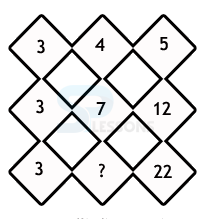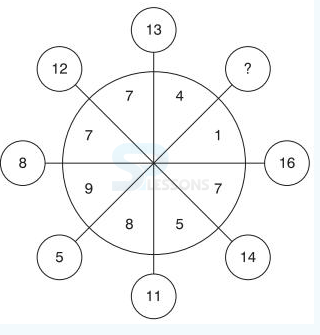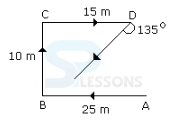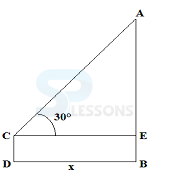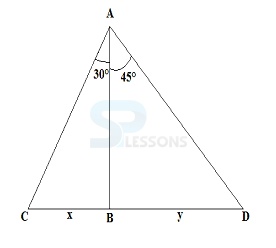 Introduction
Introduction
The article Nalgonda DCCB Study Guide, a preparation guide provides the sample question format of Telangana State DCCB exam. Nalgonda DCCB 2018 – Online Test/Examination, conducted in online Mode, has: a duration of 1 hour, a total of 100 questions, a maximum score of 100 marks, and consists of 3 sections, namely – English Language, Numerical Ability and Quantitative Aptitude/Numerical Ability. The 3 sections are separately timed and the questions can be attempted in any order.
 Pattern
Pattern
For: Assistant Manager
For: Staff Assistant
| Sl. No | Name of Tests (objective) | No. of questions | Max. Marks | Time allotted for each test (Separately timed) |
|---|---|---|---|---|
| 1 | Test of English language. | 30 | 30 | 20 Minutes |
| 2 | Test of Reasoning | 35 | 35 | 20 Minutes |
| 3 | Test of Quantitative Aptitude. | 35 | 35 | 20 Minutes |
| Total | 100 | 100 |
| Sl. No | Name of Tests (objective) | No. of questions | Max. Marks | Time allotted for each test (Separately timed) |
|---|---|---|---|---|
| 1 | Test of English language. | 30 | 30 | 20 Minutes |
| 2 | Test of Reasoning | 35 | 35 | 20 Minutes |
| 3 | Test of Numerical Ability. | 35 | 35 | 20 Minutes |
| Total | 100 | 100 |
Penalty for Wrong Answers:
There will be penalty for wrong answers marked in the Objective Tests. For each question for which a wrong answer has been given by the candidate one fourth or 0.25 of the marks assigned to that question will be deducted as penalty to arrive at corrected score. If a question is left blank, i.e., no answer is marked by the candidate, there will be no penalty for that question.
 Syllabus
Syllabus
[Click Here] for detailed syllabus.
 Samples
Samples
Prepositions
1. The mother was anxious -------- the safety of her son.
- A. upon
B. about
C. for
D. at
- A. into
B. over
C. to
D. on
- A. By whom are you taught English?
B. English is taught by whom?
C. By whom were you taught English?
D. By whom will you be taught English?
- A. The last day’s play between India and Sri Lanka was disrupted by rain.
B. The last day’s play between India and Sri Lanka were disrupted by rain.
C. India and Sri Lanka’s play of the last day were disrupted by rain.
D. The last day’s play of India and Sri Lanka was disrupted by rain.
- A. Only A
B. A and B
C. B and C
D. Only B
E. All the three
- A. A and B
B. B and C
C. A and C
D. Only A
E. All the three
- A. the road
B. to famous monument
C. passes through a forest
D. no error
- A. I am not wealthy
B. so I cannot afford
C. to buy an expensive car
D. no error
- A. Leave
B. Sweet
C. Arid
D. Quit
- A. Incredulous
B. Merry
C. Revolting
D. Dizzy
- A. as good as or
B. as good as
C. as good and better
D. none
- A. to help
B. of helping
C. helping
D. helped
- A. by being told fortunes
B. by telling fortunes
C. by telling of the fortune of
D. on telling fortunes
E. No correction required
- A. but also to carry on
B. but to carry out also
C. but also to carry out
D. and to carry out
E. No correction required
- A. Only A
B. A and B
C. Only B
D. Only C
E. A and C
- A. A and B
B. B and C
C. Only C
D. Only A
E. Only B
- A. reparation
B. affinity
C. injunction
D. exigency
E. analogy
- A. sneer
B. ostracize
C. revel
D. repudiate
E. antiquate
- A. A and B
B. B and D
C. C and D
D. C and F
E. E and F
- A. A and E
B. A and B
C. B and C
D. D and E
E. A and F
- A. A and F
B. B and C
C. B and D
D. B and C
E. D and E
- A. appeals me
B. appeal to me
C. appeals to me
D. has appealed me
E. No correction required
- A. we are lost
B. we got lost
C. we were losing
D. we all lost
E. No correction required
- A. one make of oneself
B. one makes on oneself
C. one draws to one's self
D. one makes of one's self
E. No correction required
- A. imagined
B. depict
C. shown
D. visualized
E. characterized
- A. Increase
B. variance
C. more
D. decrease
E. abundance
- A. weakens
B. initiates
C. awakens
D. strengthens
E. volatile
- A. drawn
B. postponed
C. abandoned
D. obsolete
- A. secular
B. catholic
C. progressive
D. fanatic
- A. extant
B. nervous
C. obsolete
D. out dated
- A. Composure
B. Temper
C. Anger
D. Irritation
- A. jugglery
B. indifference
C. diversification
D. obsession
- A. the worthy part
B. the smaller part
C. the larger part
D. the stronger part
- A. Acrid
B. Pungent
C. Fragrant
D. Delicious
- A. Besmirch
B. Confuse
C. Confine
D. Condemn
- A. Value
B. Gully
C. Smooth
D. Soothe
- A. QSPR
B. QRPS
C. QPRS
D. QRSP
- A. SPQR
B. SQPR
C. RPQS
D. RQPS
- A. SRQP
B. QPRS
C. SRPQ
D. QPSR
Number Coding
1. In a certain code language, if F R A M E = 48 and H U R D L E = 74, then F I G M E N T = ?
- A. 74
B. 89
C. 91
D. 87
E. 81
- A. 348967764
B. 349876764
C. 348796674
D. 348976674
E. 348969879
- A. -1 1/3
B. 46
C. 58
D. 2/3
E. None of these
- A. + = ÷ -
B. x + = ÷
C. ÷x + =
D. - + = ÷
- A. ÷ - = ×
B. – x +=
C. ÷x = +
D. ÷ + = -
- A. 1800
B. 113
C. 2000
D. 87
- A. 9
B. 23
C. 25
D. 36
- A. 27
B. 100
C. 125
D. 343
- A. 751
B. 853
C. 981
D. 532
- A. Cousin
B. Uncle
C. Brother-in-law
D. Son-in-law E. Mother
- A. Father-in-law
B. Husband
C. Son
D. Uncle
E. Father
- A. Nephew
B. Son
C. Son-in-law
D. Father-in-law
E. Cannot be determined
- A. 11
B. 12
C. 10
D. 15
- A. 555
B. 577
C. 575
D. 585
- A. 15
B. 16
C. 20
D. 17
- A. Mother’s sister
B. Grand Mother
C. Mother-in-law
D. Sister of Father-in-law
- A. His son
B. His cousin
C. His uncle
D. His Nephew
- A. Son
B. Brother
C. Cousin
D. Nephew
- A. 1
B. 2
C. 3
D. 4
- A. 1
B. 2
C. 3
D. 4
- A. 1
B. 2
C. 3
D. 4
- A. North
B. South
C. East
D. Data is inadequate
- A. 1 km
B. 2 km
C. 3 km
D. 5 km
- A. West
B. South
C. South-West
D. South-East
- A. Plane
B. Plain
C. Plenty
D. Player
E. Place
- A. Reprimand
B. Reverence
C. Amazed
D. Acquire
E. Disturb
- A. Sound
B. Socks
C. Shock
D. Snooker
E. Sharp
- A. Sachin
B. Kunal
C. Anuj
D. Rohan
E. None of these
- A. Sachin
B. Kunal
C. Anuj
D. Rohan
E. None of these
- A. Monika or Rupa
B. Kamini
C. Monika
D. Data inadequate
E. None of these
- A. 20th and 24th
B. 24th and 20th
C. 25th and 21st
D. 26th and 22nd
E. None of these
- A. 14th
B. 15th
C. 16th
D. 17th
- A. 4th
B. 8th
C. 14th
D. 15th
- A. CHRONRD
B. DSOESPI
C. ESJTPTF
D. ESOPSID
E. None of these
- A. CHMFINTK
B. LNKTCHMF
C. LNTKCHMF
D. NITKHCMF
E. None of these
- A. NQPTJHOJ
B. NQPTJOHI
C. NQTPJOHJ
D. NQPTJOHJ
E. None of these
Simple Interest.
1. Find the simple interest on Rs.500 for 9 months at 6 paisa per month?
- A. Rs.345
B. Rs.270
C. Rs.275
D. Rs.324
- A. Rs.500
B. Rs.515
C. Rs.525
D. None
- A. 29 years
B. 33 1/3 years
C. 23 1/3 years
D. 13 1/3 years
- A. 127.27 cm
B. 103.92 cm
C. 311.77 cm
D. None of these
- A. 84
B. 28
C. 30
D. 90
- A. 1
B. 188.56 m
C. 250 m
D. 197.17 m
- A. 84
B. 90
C. 168
D. 336
- A. 75 cu. m
B. 750 cu. m
C. 7500 cu. m
D. 75000 cu. m
- A. The volume of the box
B. Twice the volume of the box
C. Half of the volume of the box
D. Square of the volume of the box
- A. 0.934
B. 0.945
C. 0.954
D. 0.958
- A. [latex]\frac {1}{\sqrt {8}}[/latex]
B. [latex]\frac {1}{4}[/latex]
C. [latex]\frac {1}{2}[/latex]
D. [latex]\frac {1}{8}[/latex]
- A. [latex]log_{10}[/latex] 10 = 1
B. log (2 + 3) = log (2 x 3)
C. [latex]log_{10}[/latex] 1 = 0
D. log (1 + 2 + 3) = log 1 + log 2 + log 3
- A. 100m
B. 80m
C. 90m
D. 110m
- A. 12m
B. 10m
C. 15m
D. 18m
- A. 48
B. 60
C. 54
D. 90
- A. Rs. 1200
B. Rs. 2400
C. Rs. 4800
D. Cannot be determined
E. None of these
- A. 45
B. 60
C. 75
D. 90
- A. 160
B. 175
C. 180
D. 195
- A. 9 sec
B. 8 sec
C. 7 sec
D. 6 sec
- A. 72 kmph
B. 75 kmph
C. 30 kmph
D. 80 kmph
- A. 906 km
B. 960 m
C. 960 km
D. 966 km
- A. 11
B. 13
C. 15
D. 17
- A. 18 hours
B. 30 hours
C. 40 hours
D. 50 hours
- A. 10 mats
B. 15 mats
C. 20 mats
D. 30 mats
- A. 21
B. 12
C. 9
D. 108
E. 101
- A. 3
B. 6
C. 24
D. 120
E. 12
- A. 720
B. 144
C. 120
D. 36
E. 204
- A. 4
B. 9
C. 27
D 64
- A. 0
B. 10
C. 10[latex]^ {2}[/latex]
D. 10[latex]^ {3}[/latex]
- A. –[latex]\frac {1}{11}[/latex]
B. –[latex]\frac {11}{121}[/latex]
C. [latex]\frac {1}{121}[/latex]
D. [latex]\frac {121}{11}[/latex]
- A. 6 hours
B. 9 hours
C. 12 hours
D. 15 hours
- A. 7(1/2) hrs
B. 4(4/5) hrs
C. 3 (2/7) hrs
D. 1(1/5) hrs
- A. 120 gallons
B. 240 gallons
C. 450 gallons
D. 840 gallons
- A. 1 kmph
B. 5 kmph
C. 8 kmph
D. 3 kmph
- A. 3
B. 7.5
C. 2.25
D. 1.5
- A. 10 kmph
B. 5 kmph
C. 20 kmph
D. 22 kmph
- A. 34
B. 28
C. 12
D. 17
- A. 14
B. 16
C. 18
D. 24
- A. 50
B. 60
C. 70
D. 80
- A. Rs. 1900
B. Rs. 2660
C. Rs. 2800
D. Rs. 2840
- A. Rs. 8400
B. Rs. 11,900
C. Rs. 13,600
D. Rs. 14,700
- A. Rs. 7500
B. Rs. 8000
C. Rs. 8500
D. Rs. 9000
- A. Rs. 500
B. Rs. 1500
C. Rs. 2000
D. None of these
- A. Rs. 17,000
B. Rs. 20,000
C. Rs. 25,500
D. Rs. 38,000
- A. 1.12
B. 1.2
C. 1.25
D. 1.30
- A. 3 months
B. 4 months
C. 6 months
D. 8 months
- A. Rs. 480
B. Rs. 520
C. Rs. 600
D. Rs. 960
- A. Rs. 960
B. Rs. 840
C. Rs. 1020
D. Rs. 760
- A. 3.75 days
B. 4 days
C. 5 days
D. 6 days
- A. 18
B. 20
C. 22
D. 24
- A. Rs. 13.50
B. Rs. 14.50
C. Rs. 15.50
D. Rs. 16.50
E. None of these
- A. 80%
B. 100%
C. 84%
D. 87.5%
E. None of these
- A. 0.0009
B. 0.09
C. 0.9
D. 9
- A. 0.02
B. 0.2
C. 0.04
D. 0.4
- A. 11.0
B. 11.3
C. 11.4
D. 11.5
- A. 12.9
B. 13.8
C. 17
D. 15.8
- A. 450
B. 500
C. 400
D. 410
- A. 8000
B. 7000
C. 5000
D. 6000
- A. 659
B. 694
C. 841
D. 859
- A. 13.41
B. 20.46
C. 21.66
D. 22.35
 Best Books
Best Books
| Name of the Book | Name of the Author | Year of Publication | Book Price in Rs | Book Rating | Get Book |
|---|---|---|---|---|---|
| New Pattern English Language for SBI/ IBPS Bank PO/ SO/ Clerk/ RRB Exams (English, Paperback, Disha Experts) | Disha Experts | 2018 | RS.189/- | ----- | Flipkart |
| Bank PO English Language : 17 Years (2000 - 2016) Chapterwise Solved Papers (English, Paperback, Arihant Experts) | Arihant | 2018 | Rs.201/- | 4.3/5 | Flipkart |
| Bank PO English language Chapterwise Solved Papers - 1723 [Print Replica] Kindle Edition | Think Tank of Kiran Prakashan & KICX | 2018 | Rs.323/- | 3.0/5 | Amazon |
| Winning with English Language 2018 For Competitive Exams: For Banking, IBPS - PO and Clerical, UPSC, IAS, SSC, RAILWAYS, CTET, NDA, CDS, RRB and other (Asktenali Winning Series Book 104) Kindle Edition | Swaminathan Sankaran | 2018 | Rs.76/- | ----- | Amazon |
| Name of the Book | Name of the Author | Year of Publication | Book Price in Rs | Book Rating | Get Book |
|---|---|---|---|---|---|
| 14 Kiran’s Tricky Approach To Competitive Reasoning Verbal & Non Verbal (Fully Solved) 7000+objective Question Logical Reasoning & Analytical Ability—English (Paperback, Kiran) | Kiran | 2016 | RS.590/- | 3/5 | Flipkart |
| IBPS- CWE CLERK SPEED TESTS REASONING | BSC PUBLICATION | ----- | Rs.248/- | 3.6/5 | Flipkart |
| Topic-wise Solved Papers for IBPS/ SBI Bank PO/ Clerk Prelim & Mains (2010-16) Reasoning (English, Paperback, Disha Experts) | Disha Experts | 2017 | Rs.99/- | 4.1/5 | Flipkart |
| Reasoning for IBPS & All Other Examinations (English, Paperback, Sachchida Nand Jha) | Sachchida Nand Jha | 2014 | Rs.90/- | 3.5/5 | Flipkart |
| Reasoning Verbal, Non-Verbal & Analytical - for Competitive Examinations (Englsih, Paperback, Dipak Kumar Yugnirmal) | Dipak Kumar Yugnirmal | 2017 | Rs.400/- | ----- | Flipkart |
| Name of the Book | Name of the Author | Type of Book | Year of Publication | Book Price in Rs | Book Rating | Get Book |
|---|---|---|---|---|---|---|
| Quantitative Aptitude for All Competitive Examinations | Abhijit Guha | Prelims + Mains | 2016 | Rs.359/- | 3.5/5 | Amazon |
| Shortcuts in Quantitative Aptitude with 4 eBooks for Competitive Exams | Disha Experts | Prelims + Mains | 2016 | Rs.45/- | 3.1/5 | Amazon |
| Teach Yourself Quantitative Aptitude | Arun Sharma | Prelims + Mains | 2017 | Rs.259/- | 3.4/5 | Amazon |
| Quantitative Aptitude for competitive examination R S Agarwal 2017-2018 | R S Agarwal | Prelims + Mains | 2017 | Rs.694/- | ----- | Amazon |






